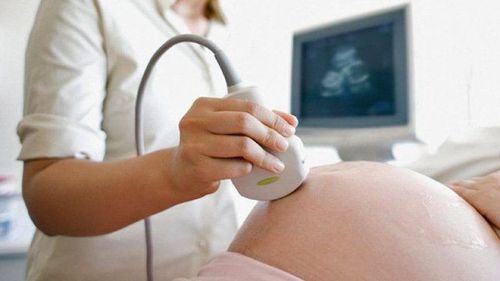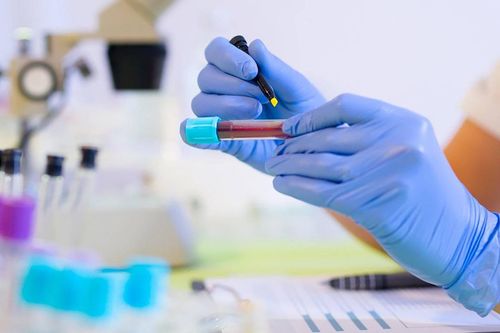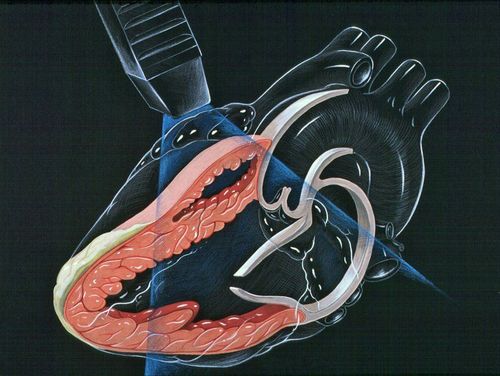This is an automatically translated article.
The article is professionally consulted by Master, Doctor Nguyen Nhu Thu Truc - Obstetrician and Gynecologist - Department of Obstetrics and Gynecology - Vinmec Nha Trang International General HospitalDuring pregnancy, to ensure a healthy mother and fetus, pregnant women need to perform different types of tests. Below is useful information about special tests that help monitor fetal health.
1. Why are special tests necessary during pregnancy?
Special tests during pregnancy are usually done when there is a risk of pregnancy complications or stillbirth. Pregnant women should have special tests in the following cases:
High-risk pregnancy: If a woman has had complications in a previous pregnancy or has a health problem such as diabetes or heart disease problems during pregnancy, such as fetal development problems, special Rh blood type or high blood pressure Decreased fetal movement A pregnancy beyond 42 weeks (term pregnancy) Multiple pregnancy with complications certain evidence
2. At what time of pregnancy should tests be performed?
During pregnancy, special tests are usually started between 32 and 34 weeks of pregnancy. In some cases, tests may be started earlier if problems are particularly severe or if there are many risk factors for pregnancy.
How often tests are done depends on the results of the test or the condition that led to the test (stable or not). Tests will be repeated weekly (possibly twice a week in certain cases).

3. What special tests are there?
Tests used to monitor the health of the fetus include:
Check the number of fetal movements If the fetal movement is felt to be less than normal, the doctor can May ask the mother to monitor fetal movements. Pregnant women can count the number of fetal movements (the number of kicks) at home without going to the hospital. The number of fetal movements can be counted in the morning, noon, afternoon or evening, if busy, at least once a day. Count the number of fetal movements in 30 minutes and three times per day
Nonstress test (NST): non-stress test Non-stress test is a form of painless test, performed during pregnancy to evaluate health status of the fetus. During the checkup, your doctor will monitor your baby's heart rate while he's resting and when he's active.
Pregnant women can go to reputable obstetrics and gynecology hospitals or hospitals to do this test. During the test, you will lie down on your bed and it usually takes at least 20 minutes to complete the test. Your doctor will wear a belt around your belly with sensors to measure your baby's heart rate. The fetal heart rate will be recorded by the machine.
The result is considered normal or responsive if the baby's heart rate rises to a certain level 2 or more times, each time within 20 minutes.
A non-responsive result means that the baby's heart rate has not had enough pacing done in a 40-minute period. This happens because the fetus is not active or asleep during the test, the mother takes certain medications, or the fetus does not receive enough oxygen. If this happens, the test may take another 40 minutes, or the baby will be stimulated to move by sounds made in the womb.
Biophysics test A biophysical profile (BPP) may be done if the results of other tests are uncertain. This test will rely on a scale system to assess the health of the fetus in the following five areas:
Fetal heart rate Fetal breathing movements Fetal body movements Fetal muscle tone Amount amniotic fluid Each area will be scored from 0-2 and the total score for all five areas above is 10 points maximum.
How is biophysics done? A BPP includes fetal heart rate monitoring (in the same way a non-assault test is done) and an ultrasound. During the ultrasound, the doctor will use a transducer that moves gently over the mother's abdomen while lying or sitting with her back. This transducer generates a sound wave, which bounces off structures inside the body. The transducer picks up these echoes, then converts them to a projected image on a screen for the technician to see.
Significance of the results of biophysical measurements From 8 to 10 points, the child is healthy. If the result is 6 points, it is not clear enough to conclude whether there is an abnormality or not. In this case, the pregnant woman needs depending on the time of pregnancy to do another BPP test within the next 12-24 hours, or can decide to have a baby. A score of 4 or below means there is a problem with the baby and you need further testing or the baby can be delivered immediately.
Regardless of the score, if there is not enough amniotic fluid, the pregnant woman needs to have the test more often or consider giving birth to the baby.

Improved Biophysics An improved BPP is done for the same reasons as the BPP test. This test is a combination of a non-invasive test with an assessment of amniotic fluid performed by ultrasound. Although it is less complicated, its usefulness in diagnosing fetal health is on par with BPP.
How to perform improved biophysics Fetal heart rate is monitored in the same way as it is for a non-assault test. Ultrasound is used to measure the amount of amniotic fluid present in the four regions of the uterus.
Meaning of Improved Physiological Test Results If the result is unresponsive, it means that the fetus is not receiving enough oxygen. Amniotic fluid measurements show how well the placenta is working. If the amniotic fluid is low, it may be because there is a problem with blood circulating in the placenta. A full BPP test or a spastic contraction test may be needed to confirm the results.
Stress test What is the stress test? This test helps the doctor see how the fetal heart rate responds to the contraction of the uterus. The lash contraction test is sometimes used if the results of other tests are positive or equivocal.
How is the lash contraction test done? During the test, a belt is worn around the abdomen with sensors attached to help detect fetal heart rate and uterine contractions. To induce mild uterine contractions, you may gently rub the nipple through the coat or you will be given oxytocin.
Significance of the results of the contractions test The result will be normal (negative) if the fetal heart rate does not decrease after the uterine contractions. If fetal heart rate decreases after most uterine contractions, the result is positive. Results may be ambiguous or unresponsive when there are not enough uterine contractions.
Doppler ultrasound of the umbilical artery Doppler ultrasound is used to check the blood flow in the umbilical artery - a blood vessel located in the umbilical cord. In addition, Doppler ultrasound is also used with other tests when the fetus shows signs of poor growth.
How is umbilical artery Doppler ultrasound done? When the ultrasound is done, the mother will be in a lying or sitting position with her back. A transducer is gently rolled over the abdomen to emit sound waves. An image of the artery being examined will be displayed on the computer screen.
What do Doppler ultrasound results mean? A normal test result will show normal blood flow in the umbilical artery. If the test shows that there is a problem with blood flow in the placenta, that means there is a decrease in the amount of oxygen being delivered to the fetus.

Please dial HOTLINE for more information or register for an appointment HERE. Download MyVinmec app to make appointments faster and to manage your bookings easily.














